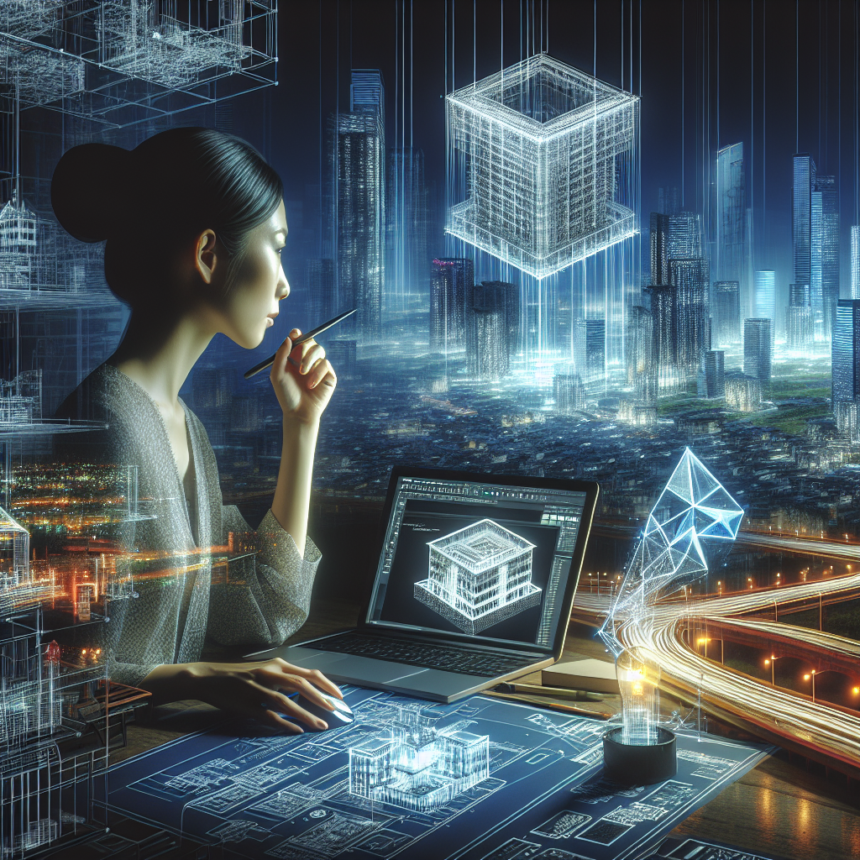The architectural landscape is undergoing a radical transformation, driven by the integration of Artificial Intelligence (AI) in the design process. Innovations in technology are providing architects and designers with tools that elevate creativity, improve efficiency, and enhance sustainability. The future of architecture is not just about constructing buildings; it’s about creating environments that embody creativity, functionality, and well-being, making AI a pivotal player in this evolution.
Enhancing Creativity and Innovation
AI is remarkably adept at analyzing vast amounts of data and generating a plethora of design options. Through generative design algorithms, architects can input parameters such as materials, cost constraints, and functional requirements. The AI then produces multiple design alternatives that may not have been conceived through traditional methods. This results in unique forms and structures that push the boundaries of creativity, combining aesthetics with practicality. Architects are now able to explore unconventional ideas quickly, merging creativity with computational power.
Streamlining the Design Process
AI applications, such as Building Information Modeling (BIM), streamline the architectural design process. By integrating real-time data, architectural teams can visualize projects more effectively, leading to enhanced collaboration among stakeholders. Algorithms help detect issues early in the design phase, reducing errors and minimizing costly changes during construction. This predictive capability allows architects to spend more time focusing on innovative solutions rather than troubleshooting mistakes, expediting project timelines significantly.
Sustainability and Smart Design
The architecture of the future will also be more sustainable, thanks to AI. As climate change and resource scarcity pose urgent challenges, AI can analyze environmental data to create designs that optimize energy consumption and minimize waste. For instance, algorithms can assess site conditions, sunlight patterns, and wind directions, allowing architects to design buildings that are both energy-efficient and ecologically friendly. AI-powered tools can suggest materials that reduce carbon footprints, facilitating the development of sustainable architectural practices.
Moreover, AI supports the concept of smart cities. By analyzing urban environments, AI helps architects and urban planners design spaces that are adaptive to the needs of their inhabitants. This includes everything from optimizing public transport routes to creating green spaces that improve the quality of urban life. AI can also facilitate the management of building systems (like heating, cooling, and lighting) to enhance efficiency and reduce energy consumption.
Data-Driven Decision Making
One of the most significant contributions AI makes to architecture is the ability to transform data into actionable insights. By analyzing user behavior, traffic patterns, and demographic information, AI tools can help architects make design choices that respond effectively to user needs. For example, if a certain area of a building receives less foot traffic, architects can reallocate space or modify design features to enhance usability and accessibility. This data-driven approach leads to more user-centered architecture that enhances the overall experience.
Future Workforce Integration
Though there are concerns regarding job displacement due to AI, the reality is that AI will likely change the nature of architectural jobs rather than eliminate them. AI is a tool that functions best when paired with human ingenuity. By automating repetitive tasks, AI frees architects to focus more on strategic thinking, creative problem-solving, and client interaction. The combination of human insight with AI’s computational capabilities can lead to better designs that serve both the clients and the environment.
Conclusion
In conclusion, AI is fundamentally reshaping the field of architecture, providing architects with unprecedented capabilities that enhance their creative and functional endeavors. While the technology may evolve, the core principles of design—functionality, aesthetics, and sustainability—remain paramount. As architects harness AI’s potential, the buildings of tomorrow can be expected to be more innovative, efficient, and responsive to the needs of society.
FAQs Section
1. How is AI used in architectural design?
AI is used in architectural design through generative design algorithms, Building Information Modeling (BIM), and data analytics. These tools assist architects in creating diverse design options, improving collaboration, and making data-driven decisions.
2. Will AI replace architects?
No, AI is designed to complement architects, not replace them. While it can automate routine tasks and provide insights, the creative and strategic roles of architects are still essential.
3. How does AI contribute to sustainability in architecture?
AI helps architects analyze environmental data, optimize energy consumption, and select sustainable materials. By facilitating smart design, AI contributes to creating eco-friendly buildings and urban spaces.
4. What are generative design algorithms?
Generative design algorithms are software tools that generate a variety of design alternatives based on specific input parameters. Architects can use these designs to explore unconventional forms and improve functionality.
5. How will AI influence urban planning?
AI can analyze urban data to inform the design of smart cities, optimizing everything from public transport routes to green spaces, ultimately improving the quality of life for urban residents.










